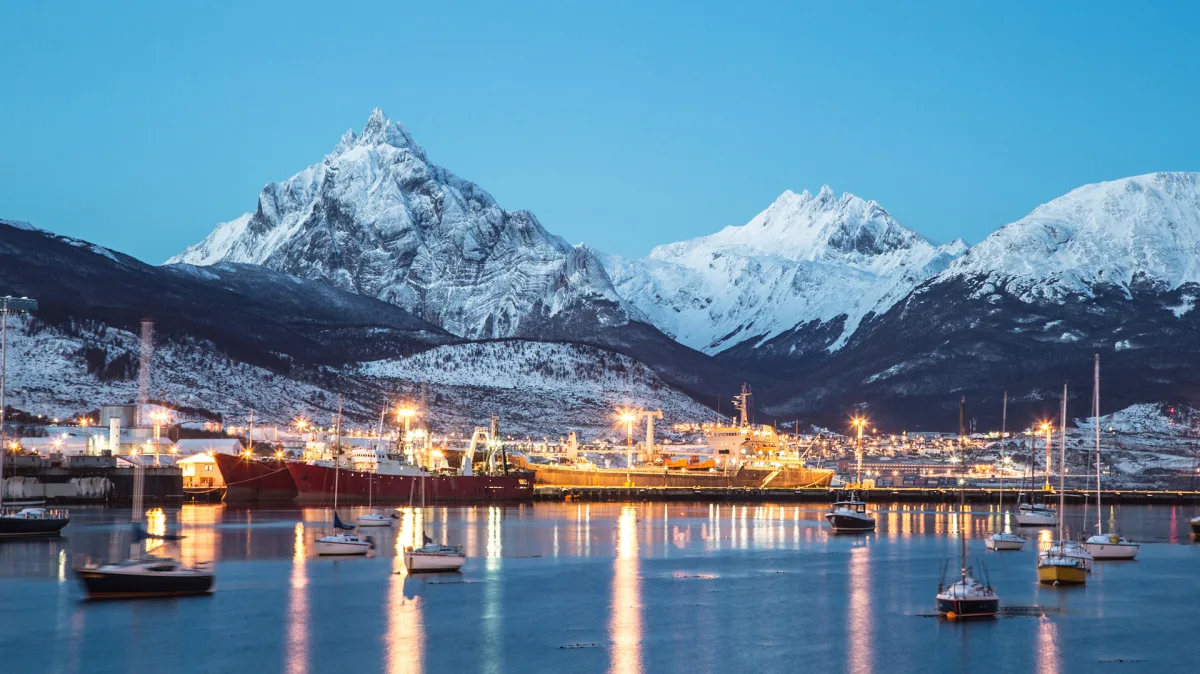Antarctica is a land of breathtaking beauty and extreme conditions. As one of the most remote destinations on Earth, traveling to this icy wilderness requires careful planning and consideration, especially when it comes to travel insurance. In this article, we will guide you through the essential aspects of finding the best travel insurance for your Antarctic expedition. From understanding coverage requirements to selecting the right provider, we aim to equip you with the knowledge needed to ensure your journey is both safe and enjoyable.
Key Considerations for Travel Insurance to Antarctica
Geographic Coverage
Before you purchase a travel insurance policy, it’s crucial to verify its geographic coverage. Most cruises tend to visit the Antarctic Peninsula, but some itineraries may venture into more remote areas or even deeper into the continent. Therefore, it’s essential to ensure that your policy covers the entire Antarctic region or, at the very least, the specific route of your expedition.
Operators requiring travel insurance for trips into the interior of Antarctica often have stricter requirements than those for standard Antarctic cruises. This is due to additional logistical complexities, higher evacuation costs, and the increased risk associated with more adventurous activities. If you plan to camp on the White Continent or visit the South Pole, be prepared for minimum coverage requirements that can range from $150,000 to $300,000 for medical evacuation.
Additionally, your policy should cover not only the duration of your expedition but also at least seven days beyond your scheduled return flight. This will ensure you’re protected against unforeseen delays.
Travel Delays
In Antarctica, weather conditions can dictate when your ship or plane can depart. Delays due to inclement weather can last for days. Therefore, it’s crucial to choose travel insurance that covers delays. Most Antarctic travel insurance policies cover up to $500 for delays, but it’s wise to look for higher coverage limits to account for the unique conditions of the region.
Flight Missed Connections
While delay coverage typically provides a daily amount for unforeseen accommodations and expenses, missed connection coverage—often available as an add-on—can reimburse you for potentially costly transportation needed to catch up with your travel itinerary. This is particularly useful if you have tight layovers or if your cruise itinerary includes critical connecting flights.
Trip Cancellation
Trip cancellation insurance may not be a requirement, but given the high costs associated with Antarctic expeditions, we highly recommend obtaining it. This protects you against unforeseen events that may force you to cancel your trip, such as sudden illness, the death of a family member, or natural disasters.
One major cruise operator in Antarctica ceased operations a few years ago, leading travelers who lacked travel insurance to lose their prepaid costs. A good trip cancellation policy will also provide coverage for the unpredictable weather conditions typical of the continent. Generally, trip cancellation coverage ranges from $2,500 to $10,000, depending on your policy’s level, so you may want to consider a supplemental policy to cover any differences if your trip exceeds this limit.
Trip Interruption
Trip interruption insurance is designed for situations where you must unexpectedly cut your trip short and return home. This can occur for similar reasons as trip cancellation, but after your journey has commenced.
Alternatively, trip interruption can also cover scenarios that require you to stay longer at your destination. For example, navigating the famous Drake Passage can be unpredictable, and vessels often turn back due to adverse weather conditions. A standard travel insurance policy typically covers up to $5,000 for trip interruption.
Policy Deductibles
An effective way to reduce the cost of your travel insurance policy is to increase your deductible—the amount you agree to pay out of pocket before the insurance kicks in. Most insurers impose a mandatory deductible of around $100 to $200. However, some travel insurance providers offer policies with no deductible, although such options may be rare for Antarctic travel.
Emergency Medical Evacuation, Repatriation, and Expenses (Including COVID-19)
Due to Antarctica’s remote location and the high costs associated with medical evacuations, all Antarctic operators require travelers to have a certain level of emergency medical evacuation insurance. Repatriation insurance is slightly different; it covers travelers who prefer to be returned home for medical treatment rather than transported to the nearest hospital.
Given that the cost of an evacuation in Antarctica can exceed $100,000 and that basic hospital services can cost over $10,000, operators typically mandate a minimum coverage for emergency evacuation, repatriation, and medical assistance between $100,000 and $250,000, or more for expeditions into the interior. Always confirm this minimum coverage with your insurance provider beforehand.
In relation to geographical coverage, note that countries such as Argentina and Chile (or any other countries you may travel through to reach Antarctica) may have their own insurance requirements. For instance, during the pandemic, both countries required foreign travelers to possess medical insurance covering any COVID-19 related expenses. Even if these requirements are no longer in effect, it’s prudent to stay informed, as regulations can change.
Coverage for Adventure Activities on Land and Sea
One of the most significant aspects of any Antarctic travel insurance policy is understanding what activities are covered. Some policies may stop covering you once you disembark from the cruise ship, while others might provide coverage for specific polar activities, either as standard or as an optional add-on.
Typically, insurance policies cover activities such as wildlife watching. However, activities like kayaking, scuba diving, camping, and hiking may not be included unless you pay a premium. More hazardous activities or journeys into the Antarctic interior—like mountaineering, skiing, and skydiving—may necessitate specialized coverage or higher medical evacuation limits.
Coverage for Loss, Theft, and Delay of Luggage
Luggage coverage is another vital consideration for your travel insurance to Antarctica, particularly for travelers carrying specialized equipment. Whether you’re bringing photography gear, camping supplies, or other essential items, it’s crucial to ensure that your policy covers loss, theft, or delays of your belongings.
Frequently Asked Questions About Travel Insurance for Antarctica
Why Should I Purchase Travel Insurance for My Polar Expedition?
Travel insurance is crucial when visiting Antarctica due to its extreme isolation, unpredictable weather, and significant costs associated with potential emergencies. Specific coverage levels—especially concerning emergency evacuation, repatriation, and medical coverage—are often mandatory for travelers.
When Should I Purchase My Travel Insurance?
It’s advisable to purchase your travel insurance as soon as you book your trip to ensure you’re protected against cancellation or changes that could occur prior to your departure.
What’s the Difference Between Medical Insurance and Emergency Evacuation Insurance?
Medical insurance covers medical expenses incurred during your trip, while emergency evacuation insurance specifically addresses the costs associated with being transported to a medical facility in the event of a serious injury or illness.
What Parts of My Expedition Need to Be Covered by Travel Insurance?
Your travel insurance should cover all aspects of your trip, including travel to and from your departure point, any layovers, and your time spent in Antarctica.
What Happens If I Have Travel Insurance Through My Credit Card Benefits?
While some credit cards offer travel insurance, it’s important to carefully review the coverage details to ensure it meets the specific requirements for traveling to Antarctica.
What If I Already Have Worldwide Travel Insurance?
Worldwide travel insurance may not automatically cover specific activities or the unique risks associated with Antarctic travel, so review your policy thoroughly to understand what is included.
Can’t You Choose and Purchase My Travel Insurance for Me?
While guidance can be provided, the ultimate responsibility for selecting and purchasing the appropriate travel insurance lies with you.
What’s the Best Travel Insurance for Antarctica?
The best travel insurance for Antarctica is one that meets all of your specific needs, including high levels of emergency medical evacuation coverage, trip cancellation protection, and coverage for adventure activities.
Travel Insurance Providers for Antarctica
Travel Insurance for North American Travelers
Several reputable travel insurance companies provide coverage tailored for North American travelers heading to Antarctica. Companies like Allianz Travel and World Nomads offer comprehensive policies that cater to adventure travel, including emergency evacuation coverage.
Travel Insurance for UK Travelers
UK travelers can consider providers such as InsureandGo or True Traveler, which offer plans that include essential coverage for Antarctic expeditions, ensuring you’re protected in this unique environment.
Travel Insurance for Australian Travelers
Australian travelers should look into policies from companies like Cover-More or Southern Cross Travel Insurance. These providers offer tailored insurance solutions for adventurous trips, including journeys to Antarctica.
Questions You Can Ask Your Insurer
When communicating with your travel insurance provider, consider asking the following questions:
- Does the policy cover all areas of Antarctica, including remote regions?
- What is the maximum coverage limit for emergency medical evacuation?
- Are adventure activities included in the standard policy, or do they require additional coverage?
- How does the policy handle trip delays and cancellations?
- What is the claims process in the event of an incident?
I’ve Purchased My Insurance. What Now?
Once you have secured your travel insurance, make sure to keep a copy of your policy and contact information for your insurer handy throughout your trip. Familiarize yourself with the claims process and understand what steps to take in case of an emergency.
Conclusion
Traveling to Antarctica is a once-in-a-lifetime experience filled with awe-inspiring landscapes and unique wildlife. However, it is also fraught with risks due to its extreme environment and isolation. Obtaining the right travel insurance is essential to ensure your trip is memorable for all the right reasons. By understanding the key aspects of Antarctic travel insurance and carefully selecting a policy that meets your needs, you can embark on your adventure with peace of mind, knowing you’re protected against the unforeseen.



